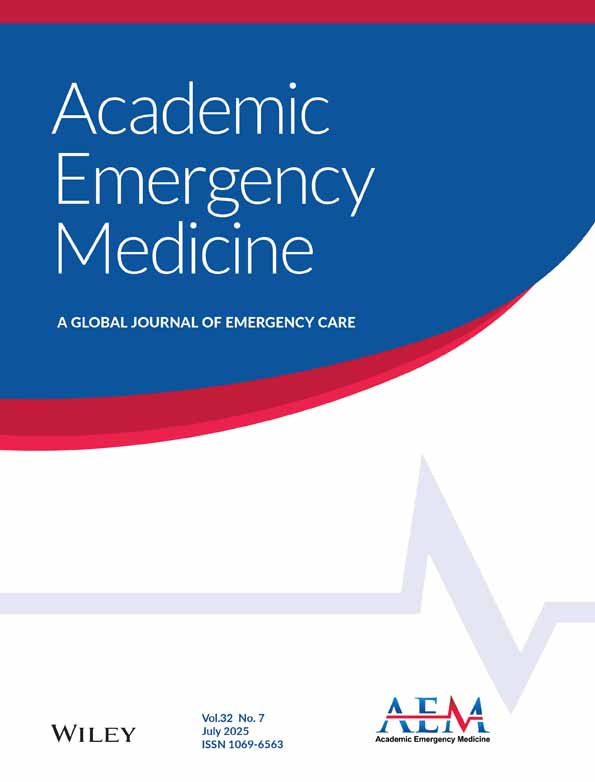Incidence and predictors of nonresponse to intranasal midazolam in children undergoing laceration repair
Supervising Editor: Robert Cloutier
Abstract
Background/objective
Pediatric laceration repairs are common in the emergency department (ED) and often associated with significant procedural anxiety. Despite the increased use of intranasal midazolam (INM) prior to pediatric ED procedures, there is limited, real-world data on the effects of INM on anxiety. This study aimed to describe the proportion of children who were nonresponsive to INM (i.e., exhibited extreme anxiety) and identify factors associated with INM nonresponse.
Methods
This cross-sectional study included a sample of 102 children (ages 2–10 years) who received 0.2 mg/kg INM prior to laceration repair in the ED. Procedural anxiety was assessed using the modified Yale Preoperative Anxiety Scale (mYPAS). Children exhibiting extreme procedural anxiety (mYPAS score ≥72.91) when procedure started were labeled as INM nonresponders. Bivariate and multivariable logistic regression analyses explored associations between child age, temperament, laceration location, time from INM administration, and likelihood of INM nonresponse.
Results
In this sample, 45.1% of the children were classified as INM nonresponders, exhibiting extreme procedural anxiety. Bivariate analyses indicated that nonresponders were younger, had lower sociability temperament, longer delay between INM administration and the procedure, and were more likely to have extremity lacerations. In the logistic regression, younger age (odds ratio [OR] 0.79, p = 0.034), lower sociability temperament (OR 0.28, p = 0.002), and extremity lacerations (OR 8.04, p = 0.009) were significantly associated with likelihood of INM nonresponse.
Conclusions
Nearly half of the children in our sample exhibited extreme procedural anxiety despite receiving INM. The high incidence of nonresponse to INM has important clinical practice implications and suggests that 0.2 mg/kg INM alone may not be sufficient to manage all pediatric procedural anxiety in the ED. Findings highlight a need for further research examining multimodal strategies to manage procedural anxiety in the pediatric ED, particularly for younger children with low sociability temperament or extremity lacerations.
CONFLICT OF INTEREST STATEMENT
SRM is supported by the National Institutes of Health (K23HD105042, PI: Martin). ZNK is supported by the National Institutes of Health (NIMH R61MH132249, PI; NICHD R01HD091286 PI; NIAMS R01AR073780, Site PI; NCI R01CA222012, Co-I); he is the president of the American College of Perioperative Medicine; and currently serves as a consultant for as a consultant for Edwards Lifesciences and Mend. The other authors declare no conflicts of interest.
Open Research
DATA AVAILABILITY STATEMENT
The data that support the findings of this study are available from the corresponding author upon reasonable request.




